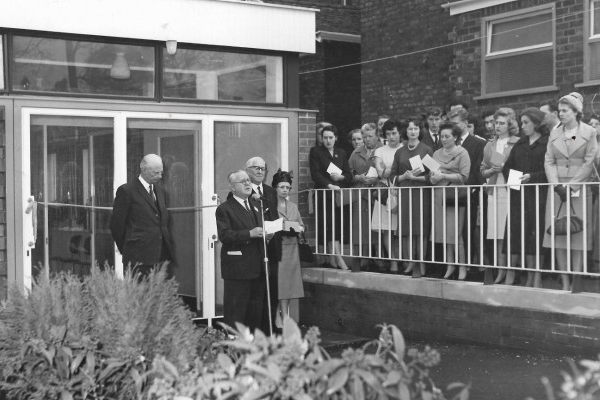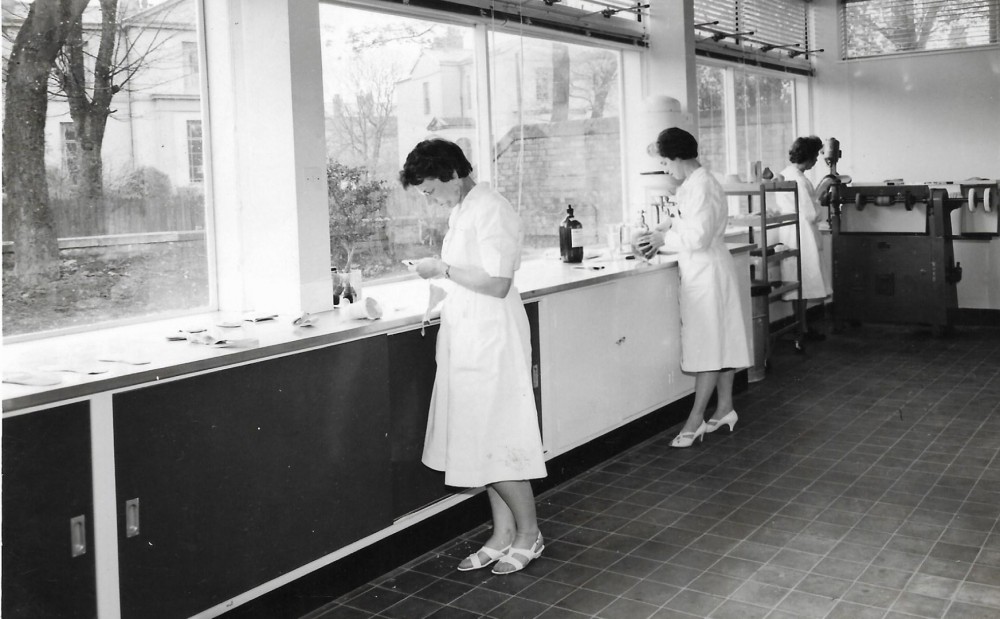Manchester Foot Hospital was founded one hundred years ago this month

Manchester Foot Hospital opened one hundred years ago this month, and by the 1960s was a pioneer of custom orthotics and podiatric appliances.
In 1923, Manchester became the second UK city (after London) to have a ‘pedic clinic’ providing specialist foot care. That October, the editor of The Chiropodist congratulated the Manchester branch on opening the clinic at 90 Grosvenor Street: ‘The privilege of precedent must and always will rest with the unselfish and persistent campaign which you and your fellows must have waged to transform your thoughts and ideals into a practicable reality.’
Seven years later, Manchester Foot Hospital (MFH) was thriving, and had opened a School of Chiropody on Upper Brook Street. A plaque commemorated the site – which is now part of Manchester Royal Infirmary – but was sadly removed around 2016. With a growing student body and increasing numbers of patients, in 1931 MFH moved again, this time to an imposing Victorian villa on Anson Road.
Until its closure in the early 2000s, MHF continued to adapt to the changing nature of chiropody: no longer ‘confined to the palliative treatment of superficial ailments as in earlier days’, as The Chiropodist put it, but ‘trained to understand fully the structure and function of the foot’. Typifying this, on 13 April 1961, celebrated orthopaedic surgeon Sir Harry Platt cut the ribbon and officially opened MHF’s new Chiropodial Appliance Department. This was housed in a state-of-the-art extension, complete with underfloor heating.
Inside, a skilled workforce made custom appliances and orthoses, from ‘a simple shield for hammer toe, enlarged hallux joint or a traction sling, to a specially designed moccasin for the amputation of all toes’. In the plaster room, chiropody students were taught casting techniques to create perfect models of patients’ feet. Sponge rubber and chamois leather were the materials of choice – used to construct metatarsal and toe appliances, custom insoles and cushioning for pressure ulcers.
The Chiropodist said the department would ‘play an important role in the training of the modern chiropodist’ – and, in so doing, improve the lives of the patients who passed through its doors.

Sir Harry Platt
Born in 1886, Sir Harry was a pioneering surgeon, and the founder and later president of the British Orthopaedic Association. As a child, he developed tuberculosis of the knee and was referred to internationally renowned orthopaedic surgeon Sir Robert Jones. Influenced by Sir Robert, who he would later train under, Sir Harry applied to study medicine at the Victoria University of Manchester.
Sir Harry became Manchester Royal Infirmary’s first professor of orthopaedic surgery, contributed to nine textbooks on the topic, and served as president of the Royal Society of Medicine. As a result of his childhood illness he had one much shorter leg, and therefore used an appliance – just like many of his patients. He died aged 100, having held more presidencies than any other person in orthopaedics.
